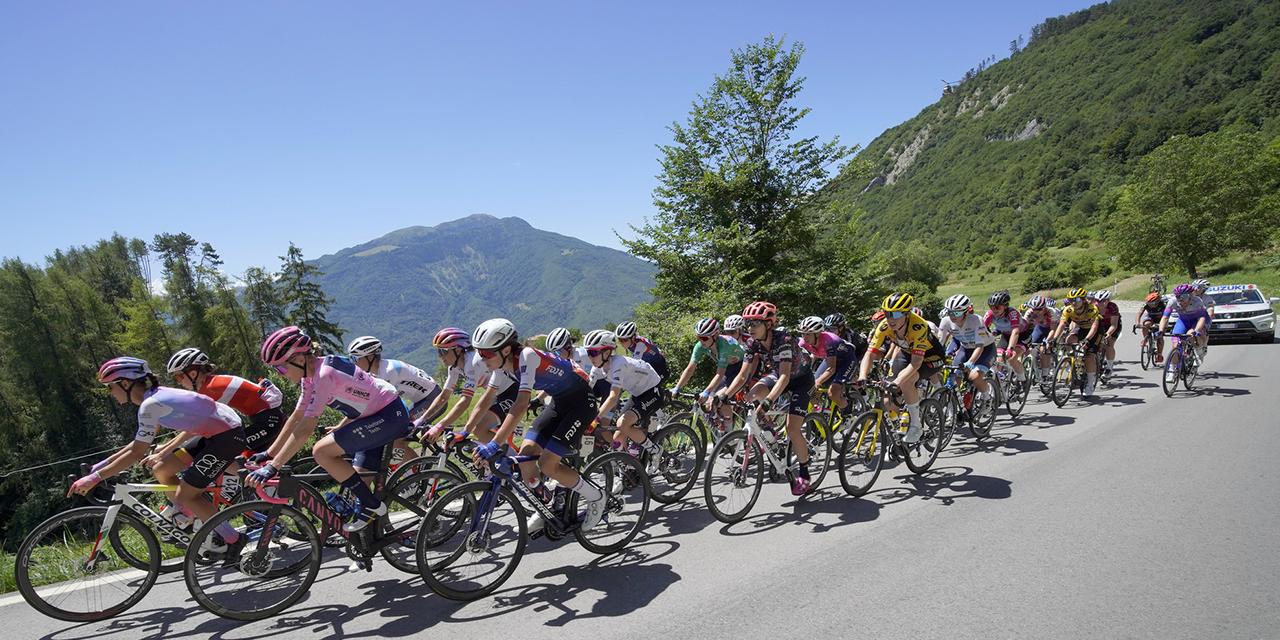The Giro d’Italia Women 2024 is still a few months away, but its route has already won the approval of insiders, fans, and athletes alike. The competition features a route characterised by increasing difficulty from the very first pedal stroke, with an assortment on eight tough and varied stages to accommodate the technical and physical characteristics of every type of rider.
The first peculiarity concerns the cities involved. With the exception of Imola, which hosted the arrival of the eighth stage of the 1998 Giro, and Lanciano, which was the starting point of the fifth stage of the 2003 Giro (with arrival in Alba Adriatica), all the other 2024 stage venues are at their absolute debut in the women’s Corsa Rosa.
The Brescia start will call on the so-called “tic-tac” specialists in a 14.6 km individual time trial, a challenge not to be underestimated. In fact, in the Giro d’Italia’s more than three-decade-long history, the length of the 2024 opening time trial is unprecedented. On top of that, the final part of the city course includes the climb to the Brescia Castle (featuring porphyry stretches): about 900 metres of ascent at 3% followed by a descent of 1200 metres (at 4.8%) with an initial part consisting of tight hairpin bends. Those two kilometres could generate gaps to be managed or made up in the following stages.
The layout of the second stage, 102 km from Sirmione to Volta Mantovana, winks at breakaway attackers, who will certainly be chased by the trains of the various teams preparing for the highly likely final sprint. The next day the girls will start from Sabbioneta and take on the first summit finish of the race in the Reggio Emilia Apennines. The finish line located in Toano is the first tangible opportunity for GC riders, especially those who might have lost some ground during the opening time trial. The profile of the Imola-Urbino, the fourth stage, concentrates the 1500 metres of elevation gain in the last 50 kilometres of the 133 scheduled. Early attackers as well as athletes who have already been dropped out of the GC could be granted the necessary space to aim for stage win.
The second and final chance of the entire Giro d’Italia Women for the sprinters will take place in the Frontone-Foligno, which also features plenty of opportunities for breakaways to shake things up. However, from the following day, those aiming for the final Maglia Rosa will have nowhere to hide. The punchy San Benedetto del Tronto-Chieti is the longest stage of the race (155 kilometres) and features an elevation gain that could prove much heavier than the 2000 metres on paper. The Marche and Abruzzo hinterland always conceals pitfalls, providing an opportunity to implement race tactics in view of the final two days.
The hotly anticipated seventh stage promises spectacle and considerable gaps, and it will more than likely be the big GC decider for the Corsa Rosa. The Passo Lanciano-Blockhaus combo, enclosed in a sort of circuit, features 40 kilometres of climbing in the last 60 (out of 123 in total) and much of the day’s 3,600 metres of elevation gain. Those who will have recovered better from the previous day’s efforts and those skilled enough to make the most of the tricky descents will play their chance for both stage win and overall victory. For the athletes who will have to try everything to overturn the ranking, the Pescara-L’Aquila, 109 kilometres, will be the eighth and last opportunity to do so. The altimetry still offers plenty of climbs and descents for a total of 2500 metres, during which heart, head and legs will be equally needed to take home the Trophy of the oldest stage race in women’s cycling.




















